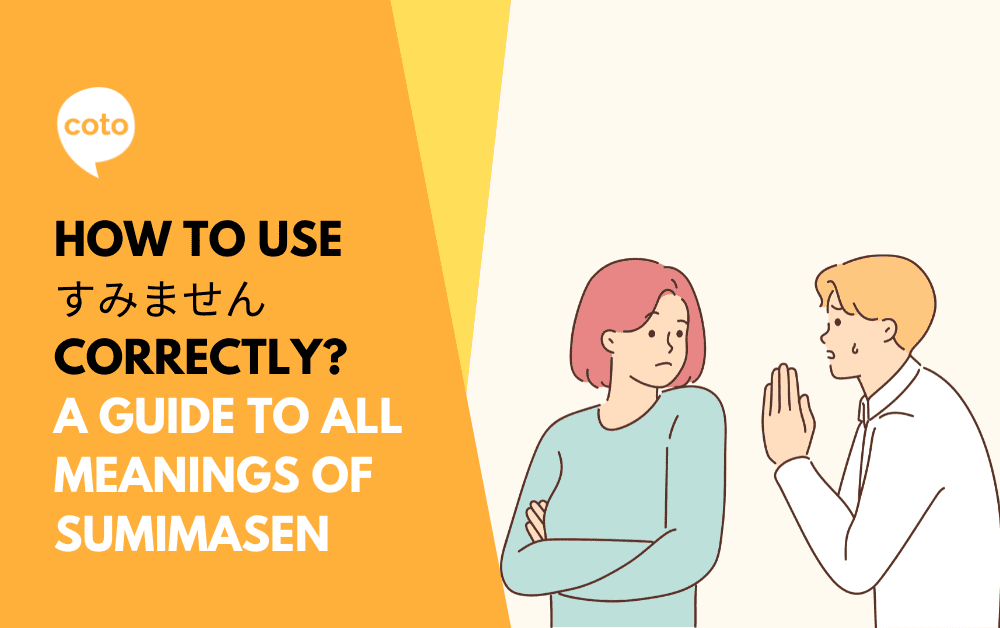Sorry” in English and “Sumimasen” in Japanese. Both expressions have the same function of apology, but there are cultural differences in the situations in which they are used.
Here is an actual example from our Coto teacher.
“When the teacher gives the instruction, 「この文を読んでください」Kono bun o yondekudasai (Please read this sentence), some learners often say, 「すみません、すみません」Sumimasen, sumimasen (Sorry, sorry), whenever they falter. But for the Japanese, they would wonder why they need to apologize so much. It is unnecessary to apologize so much as the students have just started learning hiragana, furigana, and other aspects of Japanese; these learners should not feel bad for a simple misreading. Whenever students apologize, the teacher often says 「いやいや、そんなに謝ることないよ!」Iyaiya, son’nani ayamaru koto nai yo (No, no, no, don’t apologize so much!)「大丈夫、大丈夫」Daijōbu, daijōbu (It’s okay, it’s okay), and the teacher also feel uncomfortable in these situations.”
If you have studied Japanese at least a little, you may already know or be aware that the Japanese word “excuse me” has two most common meanings: (1) “apology” and (2) “thanks.”
For instance, on the train:
- When you step on someone’s foot, the 「すみません」(excuse me) = apology
- When someone offers you a seat, the 「すみません」(excuse me) = thank you
In situations like (1), 「すみません」(sorry) is also used in English. While the use of “apology” may seem easy to understand at first glance, the functional expression of “apology” can also change slightly depending on the language and culture in which it is used. Like the situation mentioned previously, using「すみません」as a form of apology can be seen as “too much” for a native Japanese speaker.
In fact, 「すみません」also used (3) “when requesting” and as (4) “cushion words” at the beginning of a conversation or when interrupting someone’s actions.
For instance:
- 「すみません」(excuse me), can you give me a glass of water? = request
- 「すみません」(excuse me), do you have some time? = cushion words
